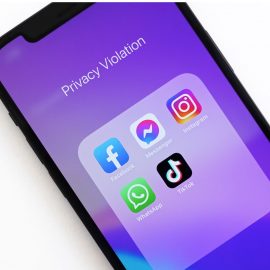

This article is an excerpt from the Shortform book guide to "Bold" by Peter H. Diamandis and Steven Kotler. Shortform has the world's best summaries and analyses of books you should be reading.
Like this article? Sign up for a free trial here.
Why should you start a fundraiser? How do you create a crowdfunding campaign?
If you have an idea that might change the world, you should consider starting a crowdfunding campaign. In Bold, Peter Diamandis and Steven Kotler explain the benefits of a fundraiser and how to create one if you think people will invest in your vision.
Check out how to create a crowdfunding campaign and make your vision come to life.
Crowdfunding Campaigns
The authors explain that a proven, reliable way to recruit open network members is to learn how to create a crowdfunding campaign where each investor receives a small return for their contribution. For example, if someone contributes $25, they’ll receive a sticker, and for $50, they’ll receive a bandana.
This technique is beneficial because it tends to attract people who are truly interested in your innovation or purpose, and offering a reward provides them with a deeper connection to your cause. As a result, these supporters are likely to be regular contributors to your cause—either through further investments, by becoming customers, or by spreading the word about your innovation and increasing its popularity. You can recruit these members by posting your campaign on crowdfunding websites such as Indiegogo or Kickstarter.
(Shortform note: Some experts agree that reward-based crowdfunding is a great way to attract individuals who’ll support your product before and after it’s released. However, it can arguably become more expensive than originally planned due to hidden costs like taxes, packaging materials, shipping costs, and so on. To minimize these expenses as much as possible while still compelling investors to support you in the long run, experts emphasize offering unique, exclusive digital rewards over material items: for example, a digital tour of your creative space or a video explaining how the product’s made.)
There are three main steps for creating a successful crowdfunding campaign:
Step #1: Determine Your Financial Goal
First, determine how much money you need. This will be the financial target attached to your campaign and what investors will see when they donate. The authors emphasize that this number must be realistic. You likely won’t be able to support your entire project with these funds; rather, they should offset some of the costs. You’ll need to provide some of your own money as well, which you’ll make back once your investment starts generating revenue.
To determine your financial goal, consider the following factors: What’s the minimum amount of money you need to raise to launch (keeping in mind that you’ll be spending your own money as well)? How much will the rewards for investors (stickers, bandanas, and so on) cost? How much will credit card and platform fees (like Indiegogo’s fee) cost?
How to Calculate Your Financial Need and Goal
The authors of Bold explain that you should determine your financial goal by first identifying how much money you need to move forward and then adding associated costs like rewards and platform fees to that amount. Other experts agree with this general framework for calculating your financial goal. However, they provide important details on how to calculate your initial financial need that the Bold authors leave out.
To determine how much money you need to move forward, experts explain that you should consider all costs involved, such as rights acquisition, labor expenses, sales and distribution, marketing, equipment, and administrative costs. Once you’ve determined this amount, you can subtract the amount you’re willing to spend from your own pocket. Finally, experts recommend increasing this number by 33% to leave room for unexpected costs.
Step #2: Create a Timetable
Next, determine how long your campaign will run. The authors note that most campaigns are between one and four months, but shorter campaigns (under two months) tend to do better. The length of your campaign will primarily depend on your financial goal—larger financial goals, such as raising hundreds of thousands or millions of dollars, will take longer to reach.
(Shortform note: Experts agree that it’s crucial to create a timetable for your campaign, but some add that the perfect campaign length is exactly 31 days—regardless of the size of your financial goal. This is largely due to the natural rate of donations over time. All campaigns face a spike in donations at the beginning and end of their campaign, with a drop in donations in the middle—this drop is called the “dead zone.” Because of the dead zone, these experts argue that longer campaigns don’t generally raise more money; rather they just waste more time trying to do so.)
Step #3: Create a Meaningful Message
Finally, to make people want to support you, you must convey the purpose-driven goal that underlies your innovation in a moving way. To do this, the authors recommend creating a story with a logical progression and emotional appeal, explaining what your innovation will do for people and why it’s important. This story should also be crafted to suit your target audience and use keywords that will appeal to them, and it should feature on your campaign page.
7 Steps to Creating a Meaningful Message
The authors of Bold recommend creating a meaningful, logical, and emotionally appealing story to influence people to engage with your campaign. In Building a StoryBrand, Donald Miller agrees and presents a more in-depth, seven-step method to help you do so:
- Start your story by pinpointing a desire that the customer has but is unable to reach (the thing that your innovation will help them achieve).
- Next, identify the problem that’s getting in the customer’s way of reaching their desire (what your innovation will help them overcome).
- Then, introduce yourself (or your brand) as a mentor who once faced the same problem but learned how to overcome it and can help customers do the same.
- Afterward, present a plan that will help the customer overcome their problem and reach their desire (explain how your innovation will solve their problem).
- Next, call the customer to action (urge them to buy or support your innovation).
- Then, explain what’s at stake if the customer doesn’t take action (how the problem will continue getting in the way of their desire).
- Finally, close your story with a happy ending (describe how the customer will achieve their desire once they’ve bought or supported your innovation).

———End of Preview———
Like what you just read? Read the rest of the world's best book summary and analysis of Peter H. Diamandis and Steven Kotler's "Bold" at Shortform.
Here's what you'll find in our full Bold summary:
- How to become a successful entrepreneur and maintain your success
- The three steps to becoming an innovator
- The psychological strengths needed to handle the high-stress commitment to innovation






